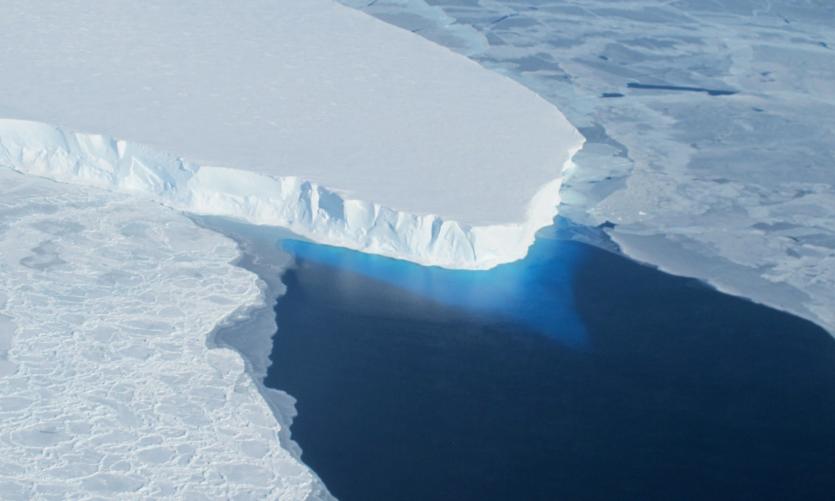Thwaites glacier in western Antarctica. Photograph: Handout/AFP/Getty Images
 SEPTEMBER 20th, 2018
SEPTEMBER 20th, 2018
By Patryk Krych | The World Daily
Seafloor barriers could slow the melting of glaciers, say scientists
According to a new paper published on Thursday in the Cryosphere journal, from the European Geosciences Union; with the sea levels predicted to rise as a cause of the melting glaciers, due to climate change, scientists have come up with a method that just might work in terms of holding back the eventuality. In this particular case, it involves the building of walls of sand and stones along the seafloor, which scientists believe would put a stop to the sliding of the glaciers, as they melt and fragment further and further with each passing day.
It would apparently be a difficult process, but would slow down the course of climate change, and buy scientists more time to find a method to stop it altogether. Questions may rise regarding whether finding more or better ways of avoiding/limiting the use of fossil fuels would not be more prudent, rather than simply buying time to the event of a worldwide flooding. However, with more time, there will certainly be more opportunities.
Michael Wolovick; a researcher at the department of geosciences at Princeton University in the US, had stated that the plans would be far easier to get under way than they sound, stating “We are imagining very simple structures, simply piles of gravel or sand on the ocean floor, within the order of magnitude of plausible human achievements”.
The researchers, along with Wolovick, had run computer simulations of the plans, making models and predicting the impacts and proper heights of the natural-seeming constructions they intend to create, beginning at the Thwaites glacier, located in Antarctica. The precise aim of the structures would be to prevent the flow of warmer waters at the bottom of the sea from reaching the glaciers, hence contributing to slowing the melting.
Wolovick had mentioned, however, that methods such as these should not put anyone into a state of mind that they ought to put off finding ways of stopping climate change, “The more carbon we emit, the less likely it becomes that the ice sheets will survive in the long term at anything close to their present volume.”
The melting glaciers have the potential of releasing massive amounts of fresh water into the ocean, which would lead to the gradual rising of sea levels all around the world. Further than they have ever risen in over a million years. The Thwaites glacier on its own is the size of Britain, and would be large enough to cause the majority of future flooding.
The undersea study vessel known today as Boaty McBoatface, what with its much greater vessel relative was named the Sir David Attenborough, is eventually to be sent off towards the Thwaites glacier for the purpose of further investigating the subsea melting, and better methods of reducing it as much as possible.
By Patryk Krych | The World Daily
©2018 THE WORLD DAILY






